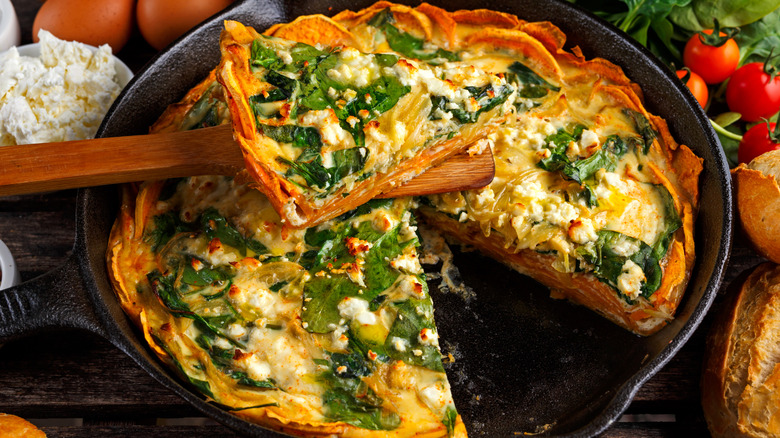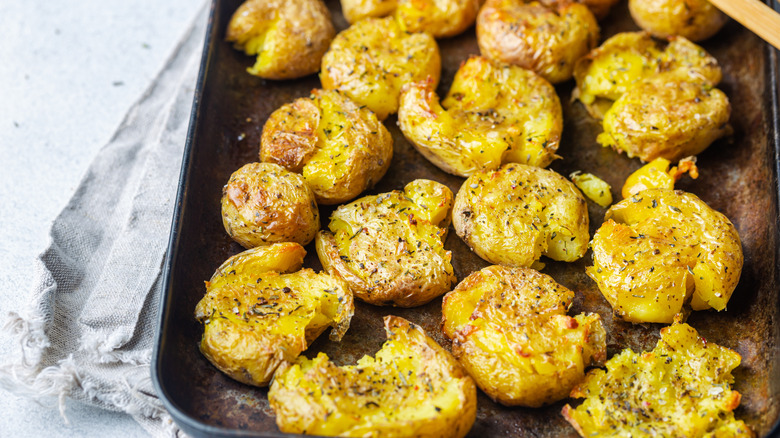Smashed Potatoes Are The More Satisfying Crust Your Quiche Needs
Few brunch dishes invite delicious variations quite like a quiche. You can pack in a full English breakfast alongside the eggs and crust, or keep it light and vegetal with a grilled asparagus and feta quiche. And if you're looking to ditch the classic flaky pie dough– due to gluten, preference, or simply for a creative riff — then turn to potatoes.
Yep, the vegetable doesn't have to be relegated to a filling; it can even hold the entire dish together. So to offer guidance on such a savvy swap, Food Republic spoke to Marissa Stevens, the recipe developer and founder of Pinch and Swirl.
According to her, smashed potatoes are an often overlooked crust candidate. "Once crisped in the oven, they hold up under custard and create a golden, crispy edge with a soft center," Stevens explained. For most people, tubers are less intimidating to handle than pastry, not to mention the foodstuff's "naturally sturdy, gluten-free, and full of flavor," she said. So turn to the grocery staple for a reinvented take on a brunch classic.
Pre-cooked small potatoes create a tender yet rigid quiche crust
Assembling such a quiche isn't overly complicated, but it does entail a few critical maneuvers for the dish to work. First of all, there's the choice of tuber itself. Not every type shines; go for a baby potato to achieve the optimal texture. With their tender consistency and delicate flavor, small Yukon Golds are a prime candidate. They're starchy enough to hold the quiche together, yet their compact shape easily presses down into a crust. However, you can also use multicolored new or even sweet potatoes for a crust.
There are several options to then cook the potato. Marissa Stevens said you should "bake them at 400 [degrees Fahrenheit for 20 to 25] minutes until golden." During this step, she also flavors the spuds with "olive oil, salt, and garlic powder." However, to soften their interior, you could also boil the small Yukon Golds for a similar duration. Either way, salting the potatoes during the first round of cooking is essential; you could even season by crafting salt block smashed potatoes.
Next comes assembling the crust. "I press them into the dish while still warm," explained Stevens. For optimal structure, she recommended a short pre-bake, too. This way, the crust gets crispy and holds its shape better once you've added the custard. And if you'd prefer for the crust to more closely resemble pastry, then remove large chunks of potato skins. Before adding the filling, Stevens advised to "make sure the base is crisp and dry." Then, you're ready to bake the dish like other classic quiche recipes, only yielding a delicious potato-based crust in the process.


